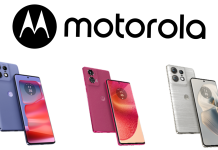Battery breakthroughs have all but dried up in recent years, and it’s probably the last frontier for smartphone evolution; how do we go from a battery that lasts a day or two (tops), to phones that can last a week or so? Manufacturers have done a lot to improve charge times, but that’s really only half the problem – we need batteries that can hold more, not just be charged more quickly.
The “holding more” part might just have been solved, or at least pushed forward, by developments out of Nokia Bell Labs. The company has developed a lithium nanotube-aided battery that promises as much as 2.5 times the longevity of today’s best alternatives, even in thin button-like form factors.
These new batteries are clearly aimed at power-hungry 5G devices – drones, IOT devices, and the like – but they could be used elsewhere too, such as smartphones.
Nokia Bell Labs’ history in this field gives some credibility to the claims. According to the published study in science journal Nature Energy, the partners have developed thick new battery electrodes using a composite of carbon nanotubes and lithium storage materials.
This design enables energy to be transferred at near-theoretical peak efficiency levels. As a result, the batteries charge quickly and make the most of whatever physical volume they consume.
Nokia’s Paul King had this to say of the development:
“By packing more energy into a smaller space, this new battery technology will have a profound impact on 5G and the entire networked world.
The combination of Nokia Bell Labs industry and device knowledge and AMBER’s materials science expertise allowed us to tackle an extremely difficult problem involving multiple disciplines.”
What could the new technology mean in a practical sense? Well, we’re already seeing next-gen IoT devices with integrated batteries that can last up to 10 years; this development could see devices that last up to 25 years. We could also see the technology in smartphones, taking the most power-hungry of platforms to a device that lasts at least two and a half days, and more frugal devices could last a working week. The alternative is we see the same kind of capacity in significantly smaller batteries, meaning smaller , lighter devices.
Where else could the tech be useful? Researchers say this could help in renewable energy systems – more efficient batteries means better storage of wind and solar generated power, and better use of that power when the time comes.
Nokia has referred to patent filings around the new tech, and plans to bring it to market in future, though there’s no clear timeline for this to happen. It’ll happen when it does!





Awesome. Can’t wait to not see these in devices til at least 2030.
Looking forward to seeing how these batteries go on 5G devices.
wear os might eat it within hours. power of wear os